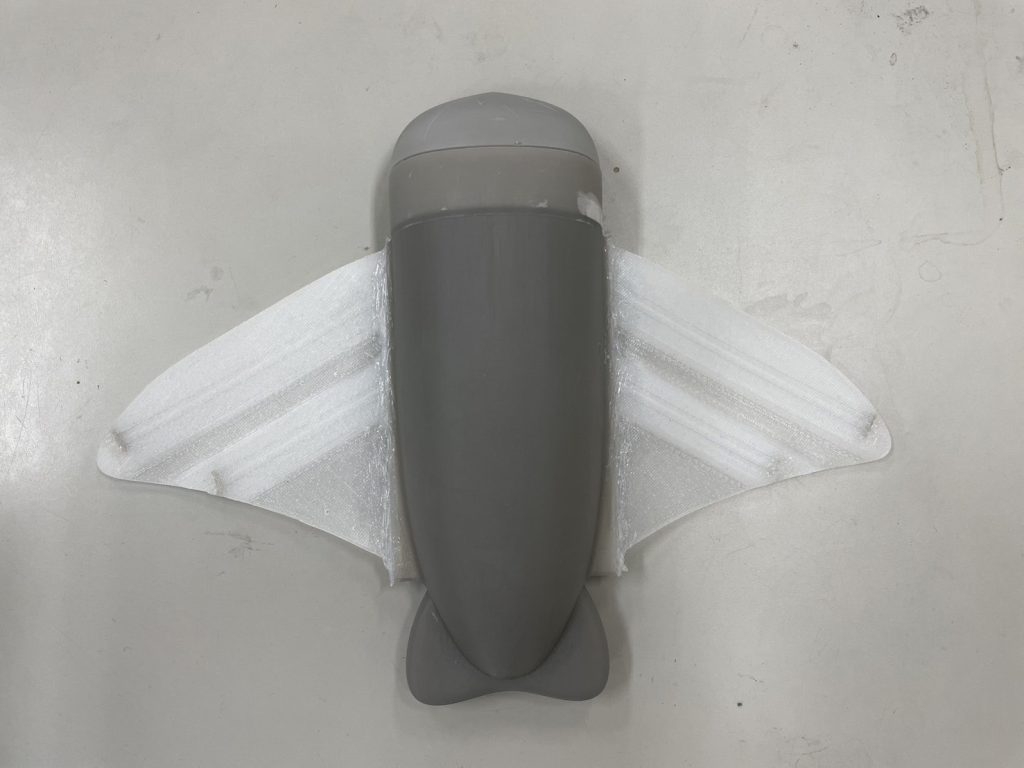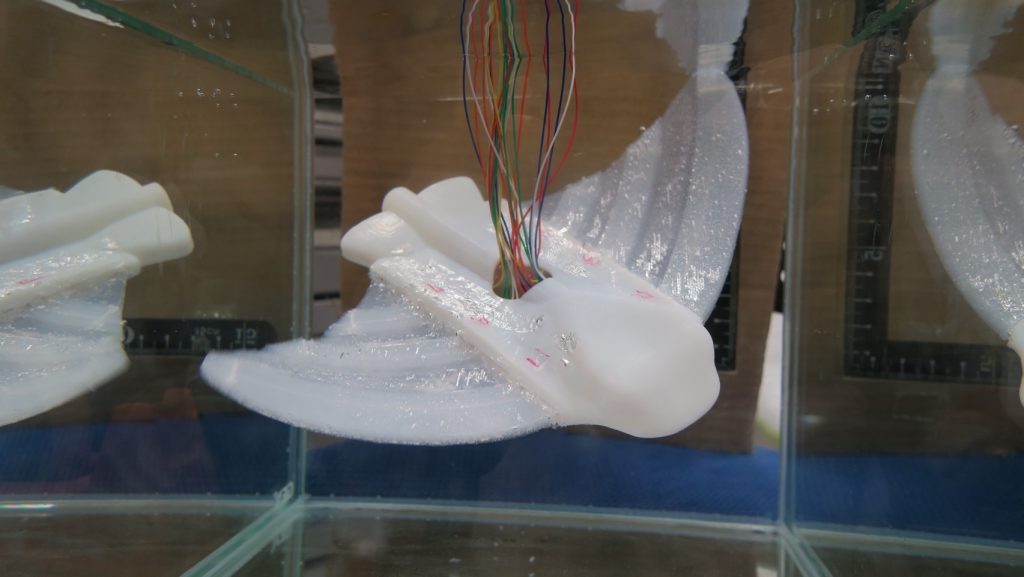メンバー | 後藤 舟
SMAアクチュエータを用いたエイ型ロボットの開発
Development of ray-shaped robot with SMA actuator
水中ロボットの推進機構は多岐にわたりますが、その中でも生物の遊泳メカニズムを模倣した研究は、高い運動性能と省エネルギー性を実現する可能性を秘めています。本研究では、特に優れた旋回性能を持つエイに着目し、その遊泳動作を模倣した推進機構の開発に取り組んでいます。
エイはMPF(median and/or paired fin)推進モードの代表的な魚類であり、その滑らかな遊泳動作と高い機動性が知られています。本研究では、エイの遊泳動作を再現するため、シリコーン製のヒレ内部にSMAワイヤを埋め込み、通電による伸縮でヒレの羽ばたきを制御します。SMAワイヤは低電圧駆動が可能であり、柔軟なワイヤ状のアクチュエータであるため、ロボットの変形や衝撃に対して高い耐久性を示します。
しかし、本ロボットはアクチュエータやヒレが柔らかいソフトロボットであるため、駆動における最適な制御パラメータの同定が困難です。そこで、機械学習を用いた制御手法を導入し、ロボットの効率的な制御を実現することを目指しています。
While underwater robots employ a variety of propulsion mechanisms, research that emulates the swimming mechanisms of living organisms holds the potential to achieve both high levels of maneuverability and energy efficiency. In this study, we focus on rays, which exhibit exceptional turning capabilities, and aim to develop a propulsion mechanism that mimics their swimming motion.
Rays are representative fish utilizing the median and/or paired fin (MPF) propulsion mode, known for their smooth swimming motion and high maneuverability. To replicate the swimming motion of rays, this research embeds shape memory alloy (SMA) wires within silicone fins, controlling the flapping motion of the fins through the expansion and contraction of the wires induced by electrical current. SMA wires can be driven at low voltages and, as flexible wire-shaped actuators, they demonstrate high durability against deformation and impact on the robot.
However, as this robot employs soft actuators and fins, identifying the optimal control parameters for actuation is challenging. To address this, we aim to achieve efficient control of the robot by introducing machine learning-based control methods.


最近のコメント